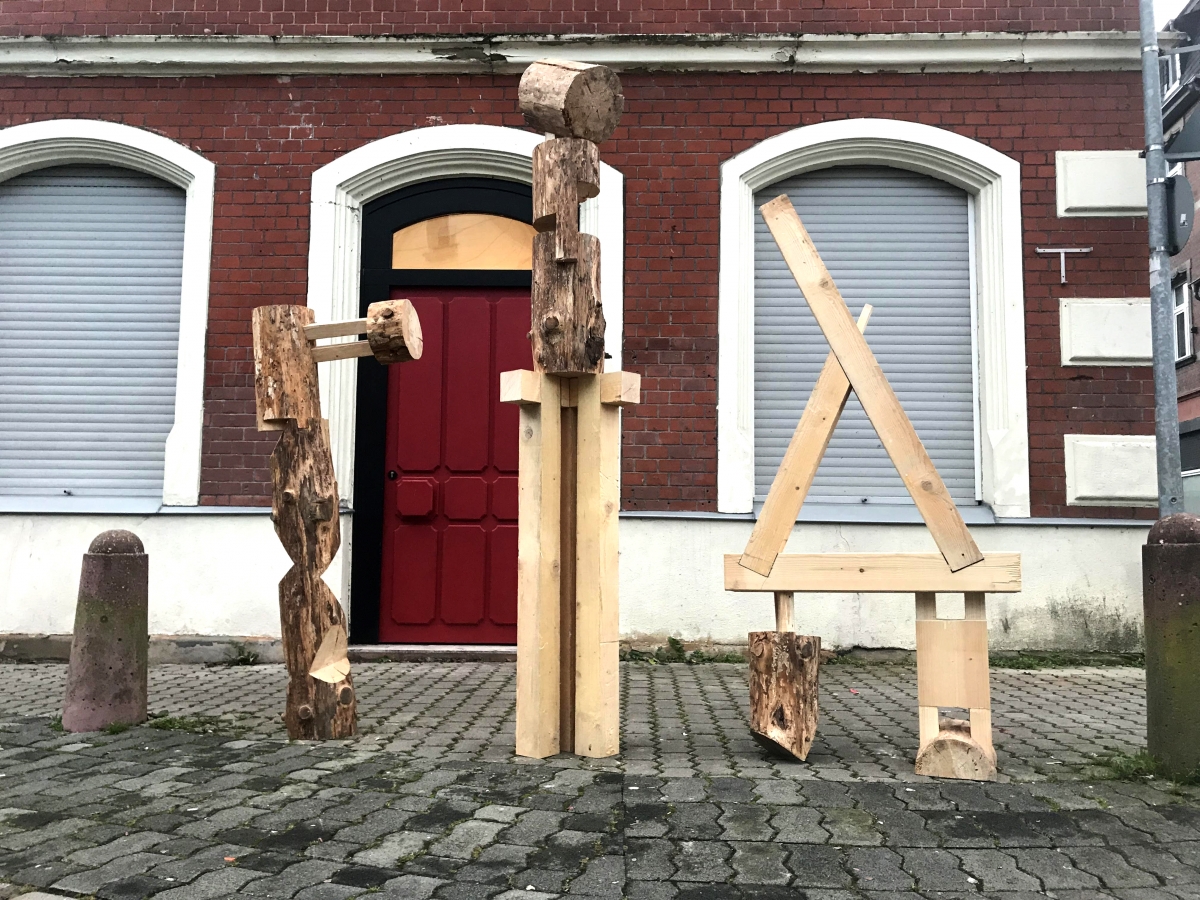By Michaela Funtanilla
University of Utah, sculpture and intermedia instructor, Kelsey Harrison traveled to the German town of Idar-Oberstien in December to create a public work for the Pfälzer Hof. The Pfälzer Hof is a rescued building in Rhineland-Palatine, Germany. It once served as a hotel and is now set to be an artist residency spot and cultural development project for writers and artists from all over the world.
When the Pfä¬lzer Hof was under construction, timbers were used to hold up the façade. After the renovation and the lumber was removed in 2016, Pfälzer Hof did a call for woodworkers to create an art piece that would live outside the former hotel to remember the importance of its reconstruction.
Harrison applied for the project because she was interested in “temporary and unsanctioned architectural interventions.” The concept of transforming tree trunks that once supported the building and used as a tool into and “object-in-its-own-right” compelled her.
She has explored architecture vernaculars and building methods in previous works, but she was excited to work with material that had an interesting history. It took a whole town to rescue the historic, Pfälzer Hof hotel from demolition. Its town, Idar-Oberstien has a history of wealth with fine jewelry and metal manufacturing, yet its juxtaposed against urban decay.
Harrison’s recent exhibitions like, “New Luxury Art Show in Downtown Salt Lake City,” defer from the wooden creations she was exploring a few years ago. Traveling to Germany called back to the work she was doing in 2016.
“I love working with wood,” Harrison said. “I love when my work can take me on strange adventures and I love the idea of using material with history.”
But she knew this opportunity wouldn’t come without its challenges. Before leaving for Germany, Harrison only had a few sketches and little knowledge of what the space in which she’d be working would be like. She would have to immediately devise her work when she arrived in order to complete the project in the allotted time of three weeks.
“I heard Rhineland is magical and frightening, like deep water can be,” she said. Harrison knew she was going to be more isolated during her residency since she was traveling during the off-season of tourism. Living alone in a small foreign town was both a selling point and foreseeable difficulty.
When she arrived in Idar-Oberstien, she bonded with the owner of the Pfälzer Hof, Eila Goldhahn, whose support and trust ended up being one of Harrison’s favorite parts of the experience.
“Her input and support were very valuable. Even more valuable were the many hours I spent alone in the studio with very little pressure and no parameters,” said Harrison.
Pfä¬lzer Hof had no tools of their own, which required Harrison to only use the tools she brought on the plane. Having no power tools posed as one her biggest challenges, but her traditional methods couldn’t be more appropriate for a town that specializes in craftsmanship.
She impressively executed her piece with chisels, a hand-saw, and a mallet she made on site. After completing her piece, Harrison felt like she was a part of a long tradition. In a local press release, Harrison was observed to use “timber frame joinery as a sculptural language, exaggerating the mechanics of connections to make them legible and poetic.”
Harrison completed her sculpture on Jan. 2. The finished piece is three sculptures and appropriately titled, Pillars of the Façade. The sculptures will be placed on the private land in front of the façade of the building to remind residents how the Pfälzer Hof was rescued and given new life.



